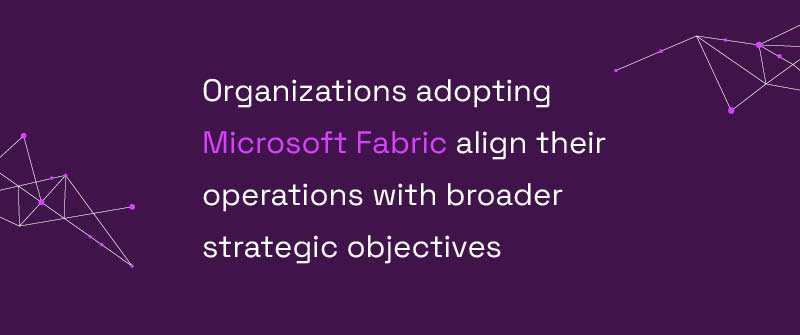
If you’re navigating the complexities of enterprise data management, Microsoft Fabric offers a unified platform that brings together analytics, engineering, governance, and real-time insights—all in one place. But what exactly makes up Microsoft Fabric?
In this guide, we’ll break down the core components of Microsoft Fabric, explain how it works, and explore how it supports strategic business growth. Whether you’re modernizing your data estate or aligning cross-functional teams, power bi consulting from P3 Adaptive can help you activate the full potential of your data.
What Are Microsoft Fabric Components?
The key concepts of Data Fabric revolve around its ability to offer a holistic, centralized approach to managing, accessing, and utilizing data across an organization. It empowers businesses to design a robust data strategy that seamlessly integrates various data sources into a unified data estate and utilizes a data hub for discovering and leveraging data assets, ensuring that decision-making is both data-driven and agile.
At its core, Microsoft Fabric is designed to simplify complex data processes through a connected suite of tools that enable seamless data ingestion, transformation, storage, visualization, and activation. Here are the key components:
- Data Factory: Enables efficient data ingestion and transformation from a wide variety of sources using pipelines and dataflows.
- Data Engineering: Provides a unified experience using Apache Spark and notebooks for large-scale data processing and preparation.
- Data Warehousing: Delivers cloud-scale data warehousing capabilities for structured data storage and fast querying across business units.
- Real-Time Analytics: Supports low-latency processing for real-time event streaming, enabling immediate insights and response.
- Power BI: Integrates deeply with Fabric to offer interactive dashboards, visualizations, and business intelligence tools.
- Data Activator: Triggers real-time actions and notifications based on data events, helping teams automate workflows and stay responsive.
- OneLake: The unified data lake within Microsoft Fabric—enables a single storage layer accessible across all workloads and teams.
These components work cohesively to create a centralized, governed, and scalable data ecosystem tailored for the modern enterprise.
Summary of Core Principles Behind Data Fabric
The essence of Microsoft Fabric consulting lies in its commitment to simplifying complex data processes. It does so by providing a unified platform that not only supports data storage but also enhances data governance, security, and accessibility across different business domains. It engages domain-oriented ownership that promotes decentralized governance, facilitating more personalized and efficient data management. By organizing data into distinct business domains, businesses can maintain autonomy while benefiting from centralized oversight.

How Microsoft Fabric Unifies Your Data Strategy
The key concepts of Microsoft Fabric revolve around its ability to offer a holistic, centralized approach to managing, accessing, and utilizing data across an organization.
It enables domain-oriented ownership while maintaining centralized governance, allowing organizations to structure data around distinct business domains. This decentralized control supports autonomy and speed while keeping data aligned with overarching business standards.
By integrating various data sources into a unified data estate, Microsoft Fabric ensures that decision-making remains agile, accurate, and data-driven—no matter where the data lives.
Why Microsoft Fabric Matters for Business Growth
Microsoft Fabric isn’t just a tech stack—it’s a business transformation engine.
Its architecture is designed with adaptability, scalability, and long-term growth in mind. Features like Data Activator and OneLake support proactive data engagement and efficient storage, while its integrated analytics drive smarter decisions, faster.
With data as a strategic asset, organizations can unlock:
- New revenue opportunities
- Operational efficiencies
- Personalization at scale
- Faster time to insight
By fostering a culture where data is accessible, trusted, and actionable, companies can respond to market changes with confidence and maintain a competitive edge.
Why Is Data Fabric Important for Business Growth?
Data Fabric is not just a technological paradigm but a tool for business transformation, incorporating features like data activator and robust data security. It encourages organizations to think beyond current capabilities and plan strategically for market expansions, customer personalization, and operational excellence. Its architecture offers adaptability, scalability, and a future-proof strategy that is essential for sustained business growth.
Embrace the future of data management today with P3 Adaptive. Our expert guidance in Microsoft Fabric can help your organization transition smoothly into a more scalable data environment, paving the way for data-driven success and unlocking untapped potential. By harnessing the power of Microsoft Fabric, you can drive innovation, optimize performance, and remain agile in today’s ever-evolving digital landscape. Get started today and discover the comprehensive advantage of P3 Adaptive’s consulting services and transform your data strategy for the modern business era.
Get in touch with a P3 team member